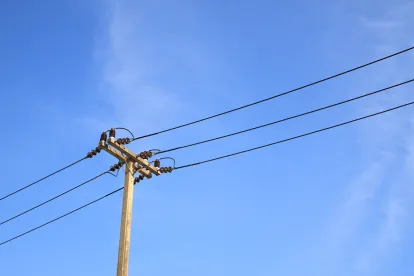Late yesterday, the White House announced that President Trump intended to nominate Mark C. Christie and Allison Clements to be FERC Commissioners. Christie would assume the seat currently occupied by Commissioner Bernard McNamee, whose term expired June 30, 2020, but who is continuing as commissioner until the earlier of when his replacement is confirmed and sworn in or the end of the current congressional session, as permitted by law. Clements would fill a seat left vacant in August 2019 with the departure of former Commissioner Cheryl LaFleur. If the Senate confirms Christie and Clements, FERC would have five Commissioners for the first time since LaFleur left the Commission in August 2019.
While Chairman Chatterjee’s term does not expire until June 30, 2021, he has made public statements indicating an interest in a political career, and he may leave the Commission before his term expires, particularly if there is a change in the White House in 2021. With Commissioner McNamee leaving the Commission, confirming the nominees also would help ensure a quorum (which requires at least three sitting commissioners).
Christie is one of the nation’s longest-serving utility regulators and is currently the Chair of the Virginia State Corporation Commission, where he has been a Commissioner since 2004. He also served as the President of the Organization of PJM States and led litigation efforts by the organization to protect the independence of the PJM market monitor. One Democratic former state legislator referred to him yesterday as a “little ‘c’ conservative.”
Clements is a longtime renewable energy advocate who recently served as the director of the energy markets program at the Energy Foundation and currently operates Goodgrid, an energy policy, and strategy consulting firm. Before starting Goodgrid, she worked for the Natural Resources Defense Council for a decade. While there, she helped lead its Sustainable FERC Project, which seeks to expand the deployment of clean energy resources and to reduce and eventually eliminate carbon emissions from U.S. power generation.
Neither Christie nor Clements are likely to be sworn in as FERC commissioners for several months. First, the White House must officially transmit the nominations to the Senate. Thereafter, their nominations will be referred to the Senate Committee on Energy and Natural Resources, which will hold hearings and ultimately would need to vote to report the nominee to the full Senate – according to news reports this morning, Senate ENR has not yet received the paperwork for the two nominees. The Senate then would need to confirm their nominations in a full floor vote, and they would thereafter be sworn in as Commissioners. During the Trump administration, this process generally has taken 3-4 months from the time the President announces his intent to nominate until the Senate votes to confirm. You may recall that there was controversy on Capitol Hill when Commissioner Danly was nominated and confirmed, in part because he was not paired with a Democratic nominee, as has been the more common practice. Concerns about Danly’s experience in the energy space also were raised during his confirmation process, and it is not clear what role those concerns may play for Christie and Clements. However, it is also not yet clear what effect the upcoming presidential election may have on these nominees’ confirmation.




 />i
/>i
